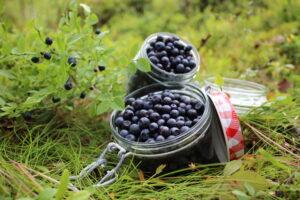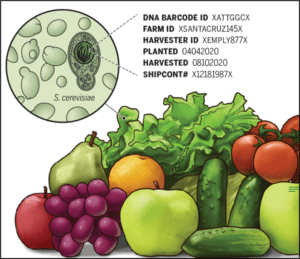Patulin and chlorpyrifos - cumulative toxicological effect
A 2019 study has investigated the combined effects of the mycotoxin patulin and the pesticide chlorpyrifos, both of which are liver-damaging and often co-occur on crops.
The identification of emerging risks is an ongoing process. The external communication of emerging risks is a complex task, with the methods, timing and target audience being determined on a case-by-case basis. Depending on the nature of the issue, the target group may be the authority (in particular the National Food Chain Safety Office – NÉBIH), senior managers, the professional community, food businesses or the wider community, consumers interested in the issue, etc. Not only emerging risks requiring action may be communicated, but some issues may also help to promote research or be important due to their educational character, and therefore may be communicated through communication channels such as the DFI's website.
A 2019 study has investigated the combined effects of the mycotoxin patulin and the pesticide chlorpyrifos, both of which are liver-damaging and often co-occur on crops.

Protein can be produced from rapeseed or from the cake left over from the production of rapeseed oil. The rapeseed protein product BlackGrain, developed by the Finnish company Apetit, has received a favourable EFSA opinion as a novel food.

The strain is genetically close to mammalian bornavirus 1, which infects several mammalian species. The mode of transmission is still unknown, but direct transmission (scratching, biting) is most likely.
The number of Anisakis parasites most commonly found in fish has increased significantly in recent decades. This growing trend may pose food safety risks.

The parasitic tapeworm Echinococcus multilocularis can enter the human body through contact with an infected animal or through ingestion of food contaminated with their eggs.

Algal blooms are on the rise worldwide, but no one has yet conducted comprehensive research to prove that they are a global phenomenon. β-N-methylamino-L-alanine (BMAA) is a neurotoxin with neurodegenerative effects, and recent studies suggest that it may play a role in the development of Alzheimer's disease and amyotrophic lateral sclerosis/Parkinson's disease (ALS/PDC). In 2003 it was described that cyanobacteria in water can also produce BMAA.
Poly- and perfluoroalkyl compounds (PFAS) are widely used group of synthetic compounds, including the food industry. A new risk assessment has shown that the intake of PFAS exceeds safe levels in certain groups of the European population (toddlers, children), which is a health concern.

In recent years, an increasing number of zoonotic cases of HEV3 and HEV4 have been reported in developed countries (HEV3 mainly affects European countries, while HEV4 mainly affects Asia). The main sources of zoonotic cases are raw or inadequately heat-treated meat products or contact with infected animals.
EFSA's risk assessment shows that the virus is enzootic in the European cattle population, but there are regional differences in prevalence. The significance of the virus is unclear as its clinical impact is unknown. Conclusive evidence for human infection is not yet available.

A new way of food tracking has been developed by scientists: genetically engineered microbes are injected with unique DNA sequence combinations, which are then sprayed onto food.

Fermented foods have many benefits, but they can also pose food safety risks. It is very important that the raw material and the culture used are microbiologically correct and that the technological steps are strictly followed.

Pet food heavily contaminated with aflatoxin was recalled in the US at the end of December 2020 after 28 dogs died from consuming the product.
The spread of carbapenemase-producing bacteria from food-producing animals to the food produced from them could pose a threat to consumers.

In recent years, bambooware (cutlery, plates, cups) have become increasingly popular. These are often similar to melamine plastic kitchen utensils and usually contain melamine and formaldehyde.
The following information is provided on recently identified herbal active substances used as ingredients in food supplements that pose a potential risk.

The BARF diet (Biologically Appropriate Raw Food or Bones And Raw Food), feeding of pets (especially dogs) with raw meat, is becoming more and more common, and poses microbiological risks to humans.

Ecdysterone is the hormone primarily responsible for molting (development) in insects. It is also found in plants, including spinach. In human applications it may have anabolic effects.

Shiga toxin-producing E. coli O121 and E. coli O26 strains have been identified in the USA and Canada in a flour-mediated outbreak. Consumers have been sickened mainly through eating, licking, or tasting raw, homemade dough or batter, and when young children were involved in pasta making, but cross-contamination has also occurred.

Nowadays, consumers are increasingly looking for beverages to replace cow's milk, such as plant milks. More and more people are also trying to prepare their own plant milk at home.
A hypervirulent strain of Listeria monocytogenes has been identified in lambs in a Chinese province. The newly discovered strain carries the gene sequences responsible for the pathogenicity of the most virulent Listeria strains in animals and humans, making them particularly dangerous and causing severe infections.